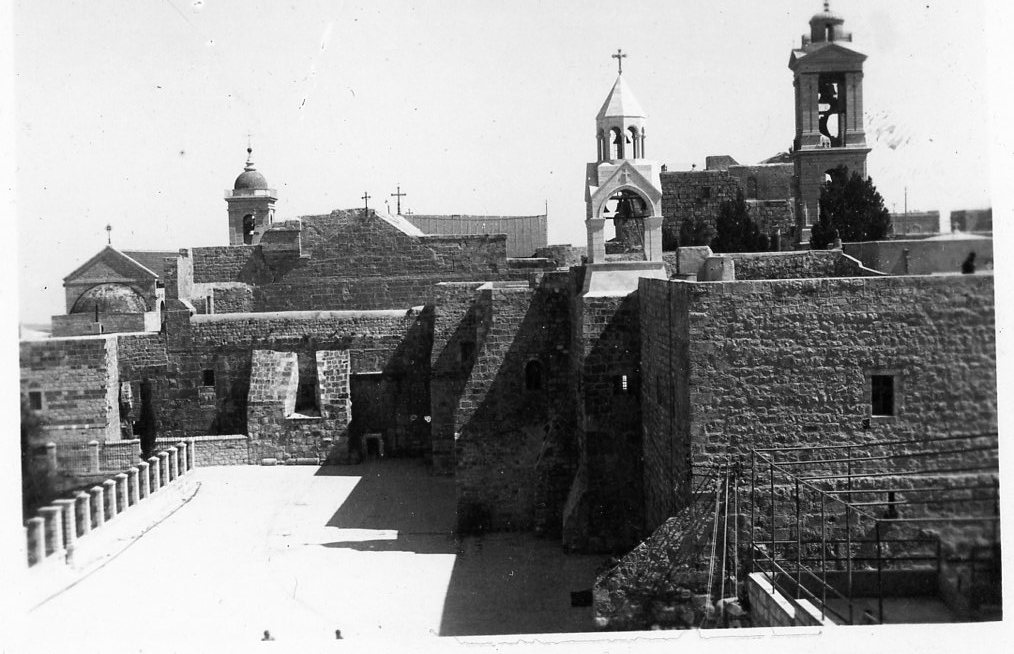
A large fortress-like church complex on Manger Square in Bethlehem is centred on the site where Jesus was said to have been born. The picture above was taken in 1944 by my father when he was stationed in Palestine with the RAF.
As early as the second century local tradition claimed that the Nativity of Christ had taken place in a stable-cave, the location of which was sufficiently well-known that the Roman emperor Hadrian established a pagan grove there dedicated to Adonis in order to discourage Christian worship on the site. In the third century Origen and other visitors were still being directed to the spot. The theologian reported: “In Bethlehem the cave is pointed out where He was born, and the manger in the cave where He was wrapped in swaddling clothes, and the rumor is in those places and among foreigners of the Faith that indeed Jesus was born in this cave.”
The first Church of the Nativity was built over the cave by Saint Helena, mother of the emperor Constantine, Rome’s first Christian ruler. This church was later damaged in an uprising and was rebuilt in the sixth century at the command of the Byzantine emperor Justinian. When the area was overrun by Persian invaders in 614, legend claims that the Church of the Nativity was spared because of depictions in a mosaic of Magi in Persian dress.
The cross-shaped Church of St Mary of the Nativity, 170 feet long and 80 feet wide, stands above the small grotto where a silver star marks the spot where Jesus was born; the inscription reads Hic De Virgine Maria Jesus Christus Natus Est — “Here Jesus Christ was Born of the Virgin Mary.” Nearby is a chapel where the manger stood in which the infant was placed. Surrounding the Church of the Nativity are other chapels and convents of the Catholic, Orthodox and Armenian churches; these three denominations share the administration of various parts of the complex. Quarrels between them in the nineteenth century took on dangerous overtones. The Russian goverment supported the Orthodox claims while the Catholics were backed by the French government; these hard feelings were one of the reasons for the outbreak of the Crimean War in the 1850s.